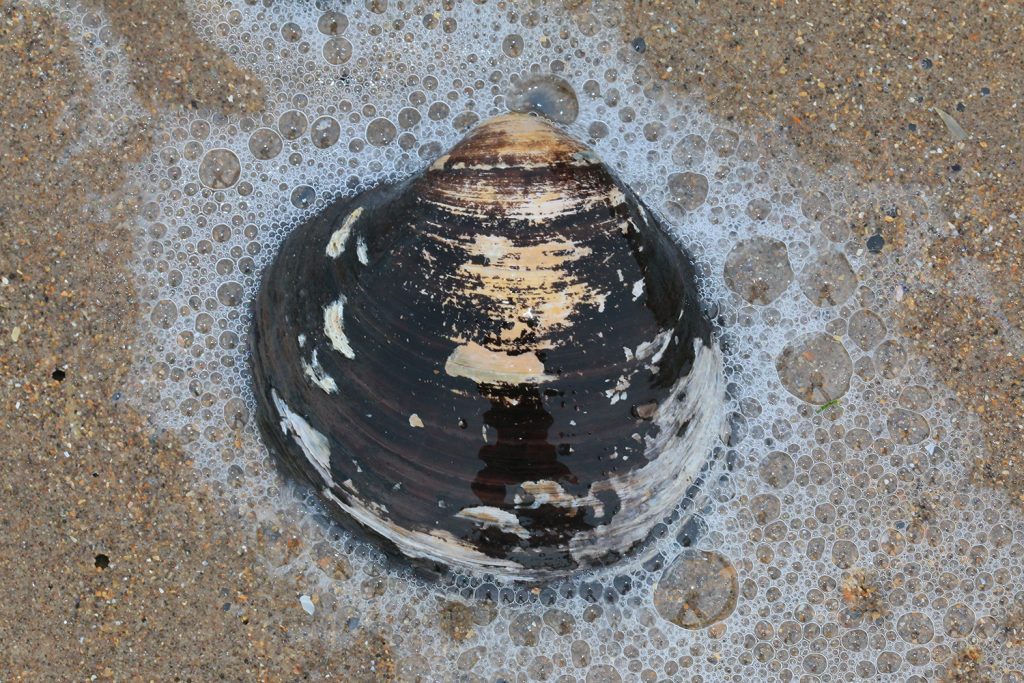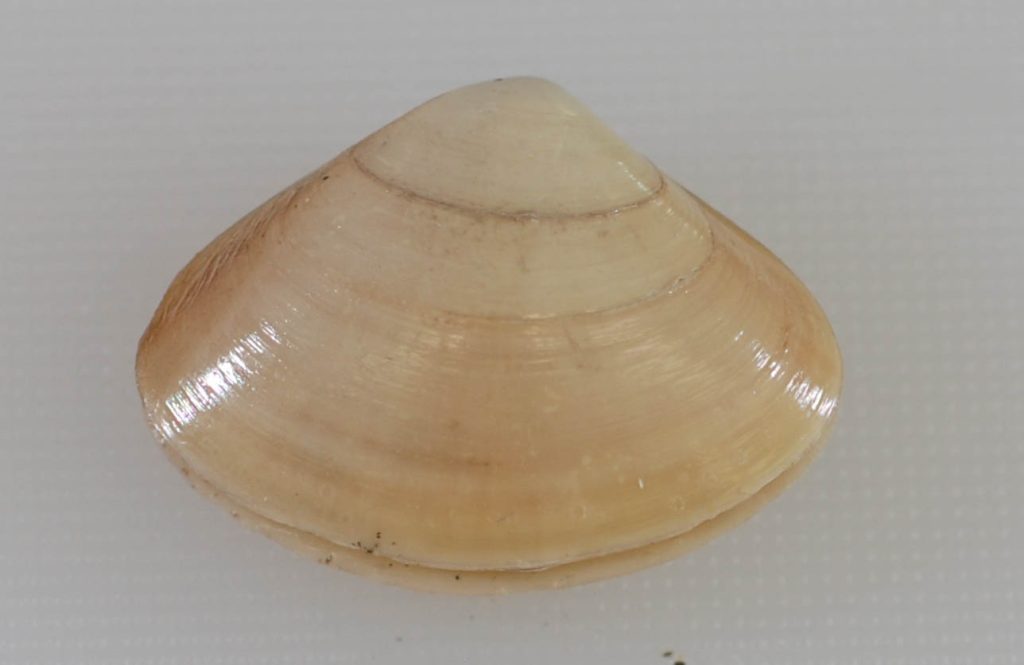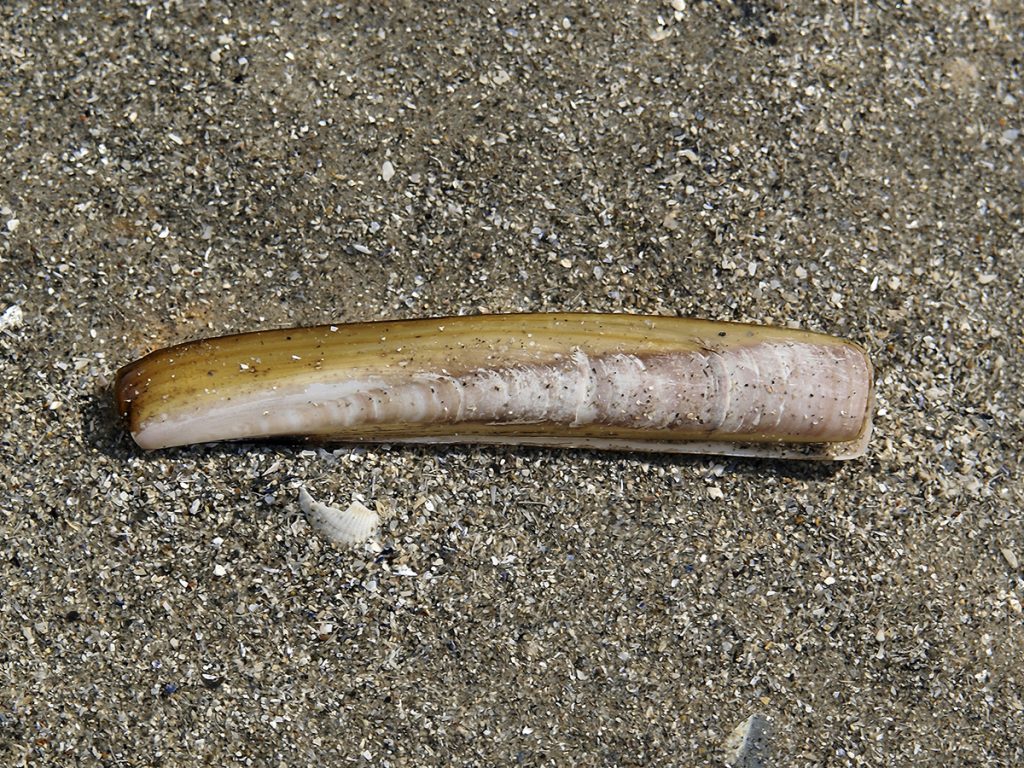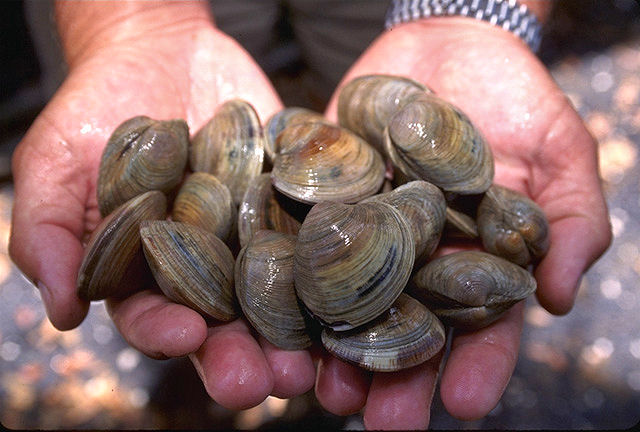Hard Clams
Species Description
Hard clams (see also soft-shell clams):
Ocean quahog or mahogany clam Arctica islandica
Atlantic surf clam or hen clam Spisula solidissima
Cherrystone, littleneck, or (Northern) quahog Mercenaria mercenaria
Razor clam Ensis directus
Mahogany clam is the name for small ocean quahogs harvested from Maine’s coastal waters. Ocean quahogs are found from Iceland to North Carolina from nearshore to deep waters in mostly sand bottom. Ocean quahogs are among the longest-lived marine organisms in the world, capable of living longer than 200 years.
The large surf or hen clam (up to ten inches) burrows in sand on the continental shelf and beneath the turbulent waves of the breaker zone from Gulf of St. Lawrence to North Carolina.
Hard clams or quahogs (also referred to as cherrystones and littlenecks, depending on their age/size), are found from the Gulf of St. Lawrence to Florida in sand and mud habitats from the intertidal zone to sheltered subtidal hard mud and sand. Adults range from 3-5 inches long. The shell is thick and grey or white in color.
Razor or jackknife clams burrow deep in sandy mud of the low intertidal and subtidal zone.
Season
Year-round.
Status
Ocean quahog (mahogany clam) population levels remain relatively high and fishing mortality rates are relatively low. The stock is not overfished and overfishing is not occurring.
Atlantic surfclam populations are not overfished and overfishing is not occurring. The fishery is managed to minimize negative impacts to sensitive habitats by gear used to harvest this species.
Hard clam (Mercenaria) status is unknown. There is a small but productive wild hard clam fishery on the New Meadows River in West Bath.
Razor clam status is unknown; there is no commercial-scale fishery. Early efforts are being made to operationalize the hatchery culture of razor clam seed (juveniles) in Maine.
Regulatory Authority
Maine Department of Marine Resources (DMR) regulates hard clams, co-managing some species (e.g., quahogs) with towns that have conservation ordinances for those species. In federal waters, ocean quahog and surf clam are managed by the Mid-Atlantic Fishery Management Council.
Commercial Harvest
Hydraulic or hand dredge, digging by hand with a rake. See the vessel and gear guide for more information.
Recreational Harvest
NOTE: Below minimum size limits and harvest limits given are from the Department of Marine Resources; individual municipalities with a shellfish conservation ordinance may set more conservative restrictions.
Mahogany clams must have a hinge width of at least one inch (measured at the thickest part of the clam near where the shells are joined together).
Quahogs must be thicker than 1 inch across the hinge width. Harvest limit of one peck per person per day.
Razor clams must be 4-inch minimum size measured along the longest axis. Putting salt on a razor clam hole will often make it rise up out of the sediment.
Atlantic surf clams have no size limit.
If collecting for personal use, obtain a recreational harvesting license from the town office, and check with the Department of Marine Resources to make sure the area is open to harvesting by visiting their website or calling 1-800-232-4733 or 207-624-7727.
Shellfish recreational limits: The one peck per day limit is for a combined total regardless of species harvested. Towns may also require recreational licenses although the state does not require a license to harvest for personal consumption.
Health Benefits & Risks
All clams are low in fat and calories and are an excellent source of selenium, iron, and vitamin B12. Clams are a good source of zinc and contain omega-3 fatty acids. Clams are low in mercury.
Clams are filter-feeders and thus are vulnerable to bacterial pollution, chemical contamination, and harmful algal blooms (red tide), especially spring through fall. Clams in the market and on the menu are safe when purchased from a certified shellfish dealer. If harvesting recreationally or for personal consumption, check the DMR’s list of closed areas before digging, or call 1-800-232-4733 or 207-624-7727.
Eating raw clams comes with some risk of exposure to viruses and bacteria, especially for people with compromised immune systems.
View the 2021 US Food and Drug Administration’s fish consumption guidelines.
Buying & Preparing
Large ocean quahogs have relatively small, dark, and tough meats, and are used in processed clam products such as soup, chowder, and sauces. Smaller ocean quahogs from Maine waters marketed as “mahogany clams” are sold on the raw half-shell market or for steaming. Use as a substitute for cherrystones or littlenecks.
Surf clams are used in processed clam products such as breaded clam strips, minced clams, stuffed clam products, chowders, and broth.
If a clam’s shell is ajar before cooking, squeeze it together. If the shell remains closed, the clam is fine. If the shells spring apart when the pressure is released, do not eat it. After steaming or cooking, throw away those clams that have not opened.





